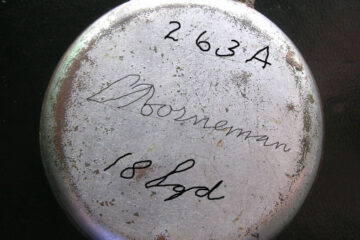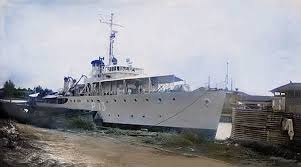In the months leading up to the Pacific War, the Netherlands East Indies (NEI) attempted to balance neutrality with quiet resistance to Japan. But to Australian officials, this stance seemed naïve—and potentially dangerous. As early as November 1941, the Australian government was growing concerned that the Dutch in Batavia were still hoping to avoid war, even as Japan massed forces on their doorstep.
At the same time, as the threat from Japan increased, the Western Powers began holding a series of staff conferences in Singapore, Jakarta, and Manila during 1940 and 1941. These Anglo-Dutch, Anglo-American, and Anglo-Dutch-Australian meetings were limited to military-level discussions, as the United States—still officially neutral—was unwilling or unable to make binding commitments. Although Great Britain and the Netherlands had become allies in Europe, London offered no guarantee of coming to the aid of the Netherlands East Indies if Japan attacked. The Dutch therefore followed a neutral course in Asia, an attitude that later frustrated their Australian counterparts. At the conferences, tentative operational agreements were made for cooperation in case of Japanese aggression. The Dutch promised bomber and fighter squadrons and several submarines for the defence of Singapore, while the British and Australians agreed to provide air and army support for Ambon and Timor. However, no combined headquarters was established, and coordination remained minimal.
When Japanese forces invaded Malaya and the NEI in December 1941, Australia expected a rapid shift in Dutch policy. Yet well into February 1942, Dutch communications remained ambiguous. Dutch press releases via Anep-Aneta, the official NEI news service, often continued to highlight Dutch neutrality or depict the Netherlands as acting independently. One translated dispatch, intercepted and filed just before Java’s fall, noted:
“In the Netherlands East Indies, there have been some criticism of the Allies in their conduct of the campaign in Malaya…. a great part of the Dutch air force was lost in the unavailing defence of Malaya… but the risk was taken in the expectation that reinforcements would soon arrive in the Far East…. But those reinforcements never came.” (Ford, Ch. 2)
This narrative, echoed by Dutch officials who escaped to Australia in early March 1942, further inflamed tensions.
Australian exasperation grows
By mid-March 1942, the Curtin Government was receiving increasingly blunt reports from its Department of External Affairs. On 17 April, the department drafted a confidential memorandum titled Proposed Measures to Offset Dutch Resentment at Allied Failure to Send Reinforcements. It acknowledged that the Dutch felt abandoned by the Allies and that this perception had been publicly aired in The Sydney Morning Herald and repeated by newly arrived NEI officials (Ford, Ch. 2; van den Berg 2021).
The memorandum feared that Dutch resentment might damage wartime cooperation—not only in Australia but also in London, where the Dutch government-in-exile under Prime Minister Pieter Sjoerds Gerbrandy was growing concerned about the fate of its merchant fleet. There were also concerns that Dutch civilians and military personnel arriving in Australia would carry “a certain hostility which may make co-operation difficult” (Ford, Ch. 2).
A plan to placate the Dutch—and the world
To defuse tensions, the External Affairs Department proposed a coordinated plan:
- Avoiding “lame excuses” and instead launching propaganda efforts to explain why Allied reinforcements had failed to reach the NEI
- Offering logistical assistance to the reorganised NEI government-in-exile in Australia
- Facilitating re-equipment and integration of Dutch forces, including “native troops”
- Assisting in the protection and management of Dutch property in Australia
- Allowing Dutch participation in the control of shipping and aviation
- Providing loans and financial backing as a show of confidence in the restoration of Dutch authority
These actions were not only intended to reassure the Dutch but also to protect Australia’s standing in the wider Allied bloc, especially in Asia and with neutral nations such as China and India.
A deeper divide than expected
The growing tension between Dutch hopes of restoring colonial rule and Australian discomfort with being drawn into postwar colonial politics was already taking shape. Prime Minister John Curtin’s 24 March 1942 message of solidarity to Gerbrandy seemed sincere—praising Dutch resistance and offering Australia as a “sanctuary” and “mate” to the NEI. But behind the scenes, Australia was unsure whether to treat the Dutch administration in exile as a government in its own right, or as a satellite of the Dutch cabinet in London.
The Australians had very little experience in dealing with foreign governments independently of Britain. The sudden presence of a foreign administration operating from Australian soil was unprecedented, and decisions had to be made on the run. In this atmosphere, Dutch secrecy, mixed signals, and political divisions—between the London Dutch, NEI reformers like Van Mook, and the Batavia establishment—deepened Australian frustration.
When neutrality failed
When Japan attacked Pearl Harbor and invaded the NEI within days of each other in December 1941, Dutch neutrality collapsed. But the delay in establishing open defence coordination had already taken its toll. The Dutch lost vital time in organising the defence of Ambon and Timor, while Australian forces found themselves poorly integrated into combined operations.
This episode marked a turning point. From this point forward, Dutch–Australian relations would become more open and cooperative. But the legacy of mistrust from late 1941 remained a reminder of the risks of diplomatic hesitation in times of existential threat.
This article is part of a six-part series on Dutch–Australian wartime cooperation. For related perspectives, see:
- Divided in exile: tensions between Batavia and London in the Dutch war effort.
- Reform or restoration? Political tensions over the future of the Netherlands East Indies during wartime exile.
- Wartime reform and Indonesian voices: Dutch–Indonesian political tensions in exile.
- The Dutch purchasing mission and wartime supply issues in Australia
- From indifference to diplomacy: how the war transformed Dutch–Australian foreign relations
- A Dutch military and civil inventory in Australia – March 1942 snapshot
References: Jack Ford, Allies in a Bind: Australia and the Netherlands East Indies in the Second World War, CQU Press, 2001
R. W. A. van den Berg, Unchained Interests, Netherlands Staff College Monograph, 2021


